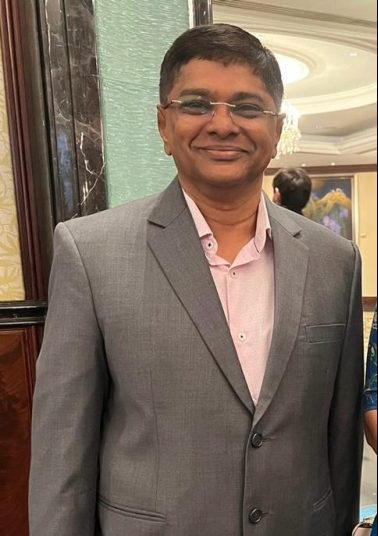 Mr Rajkumar Chandra, owner of the Jothi store & flower shop, a household name, and advisor to LiSHA (Little India Shop Owners and Heritage Association) talks about, as how the pongal celebrations begun in Little India in the year 2000, the challenges, and the evolving and the impact of the celebrations and it’s inclusiveness now.
Mr Rajkumar Chandra, owner of the Jothi store & flower shop, a household name, and advisor to LiSHA (Little India Shop Owners and Heritage Association) talks about, as how the pongal celebrations begun in Little India in the year 2000, the challenges, and the evolving and the impact of the celebrations and it’s inclusiveness now.
1.How and why was this idea of pongal celebrations in Little India planned?
LiSHA was formed in the year 2000, with Mr Param as the chairman, also the vice-chairman of HEB (Hindu Endowment Board) then, and I was the secretary. Hindu Endowment Board was our supporting partner then. The first time ever in Little India, the celebrations for the pongal festival was planned, at that time. The reason for this was to educate the younger generation about pongal and it’s significance. Though there is no agricultural activities nor paddy forms in Singapore, still Indian’s main staple food is rice. One need to know, as how it is being cultivated. Hard work of the farmers must be made known to public. We need to understand that the food on our plate does not come that easily. Pongal, the harvest festival, thanking the Sun God is celebrated in different parts of India, in different names. We wanted it’s significance to reach all the Indians in Singapore too.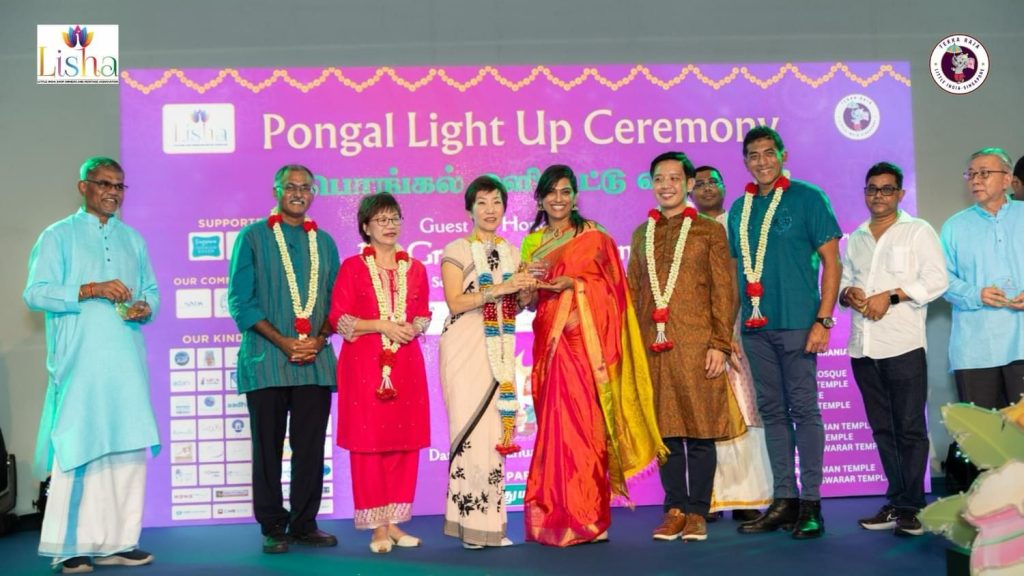
2.What were the challenges in the initial planning?
As part of the planning, the first closure of the Campbell Lane took place. To gazette it for the closure of such a busy road with a car park and with many businesses, we had to write to many departments. There was a high-resistance from the shopkeepers of the Campbell Lane, as their businesses would be affected. Still Mr Param put in his best efforts to fulfil the necessary requirement in closure of the Campbell Lane during the festival period. That was the biggest challenge and as we were with limited financial resources then, we had to get sponsors for all the activities related to the festival.
3.Where did the celebrations take place then?
The place where the Indian Heritage centre is now built, was an open space then. With the help of the Hindu Endowment Board and other supporting partners, we organised the ever first pongal celebrations in Little India there, by putting a tentage. To showcase the authenticity of pongal, we wanted to bring cows and calves in display, as Singapore children have no chance to see them on the open areas of Singapore. Another challenge was with the AVA in getting clearance in maintenance of the cows and calves. We assured them that the watering, drainage, feeding of the cows, cleaning of the area will be taken care properly.
4.What are the other things that took place as part of the celebrations?
We had cultural events taking place for a week. With the help of the sponsors, we could meet out the expenses. Jothi Stores sponsored the pongal pots, some shops brought paddy and others in progeny and at the time those were put in the display. I remember we had three-hour cultural event. Many cultural groups accepted a nominal fee and did programs.
5.Did it reach the public as expected?
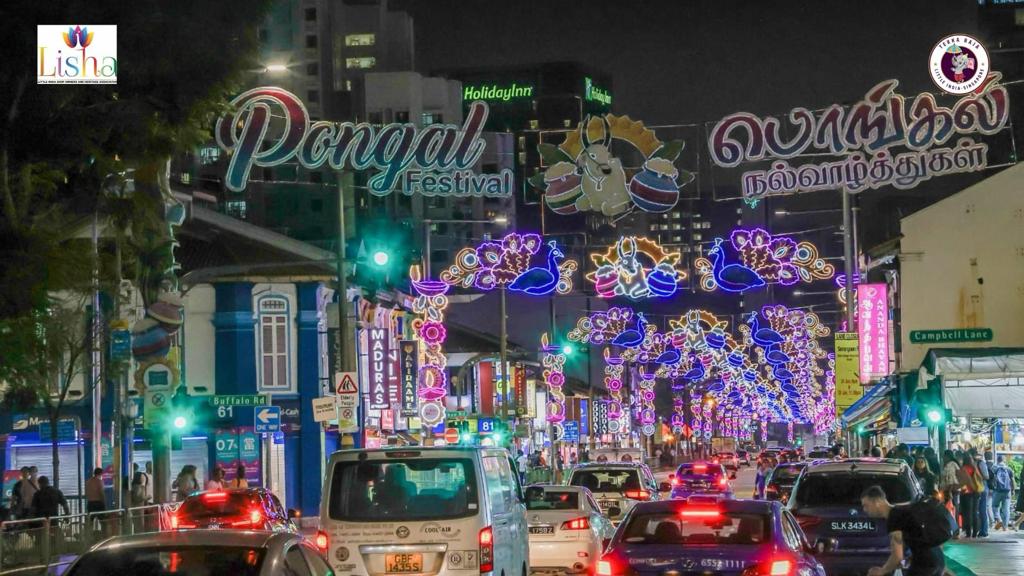 Yes. Actually, I would say the whole Campbell Lane turned as a ‘pongal village’. Many shopkeepers tapped well on this opportunity and started to sell the pongal related items such as sugarcane, pongal pot, turmeric, ginger and others. More customers came to Little India to buy the pongal items, and eventually the businesses in Little India grew. Not just it reached the Tamils, but also many Indian ethnic groups, as it is part of their celebrations too. Hence I would say this initiative transcended the cultural value of pongal in Singapore.
Yes. Actually, I would say the whole Campbell Lane turned as a ‘pongal village’. Many shopkeepers tapped well on this opportunity and started to sell the pongal related items such as sugarcane, pongal pot, turmeric, ginger and others. More customers came to Little India to buy the pongal items, and eventually the businesses in Little India grew. Not just it reached the Tamils, but also many Indian ethnic groups, as it is part of their celebrations too. Hence I would say this initiative transcended the cultural value of pongal in Singapore.
6.Who are the other factions that were aimed at to be part of this celebrations?
We also worked with the Non-Indian groups. Over the years we reached out to the schools of Singapore, as our primary objective was to reach the younger generations. Slowly it started to get into all the Community Centres. More Singaporeans started to know about the festival and wanted to be part of it.
7.How did the public enjoy?
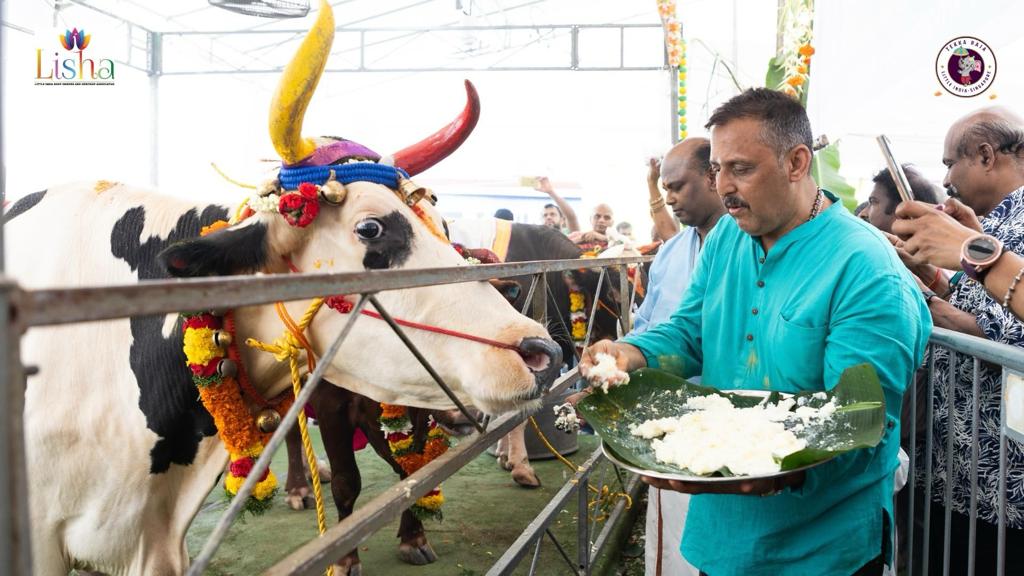 To view the cattle farm, small children used to come with their parents, grandparents and over the years, it has become a family affair. It has now become an event looked forward to every year. They also learn many more cultural values.
To view the cattle farm, small children used to come with their parents, grandparents and over the years, it has become a family affair. It has now become an event looked forward to every year. They also learn many more cultural values.
8.Can you tell about the mass pongal?
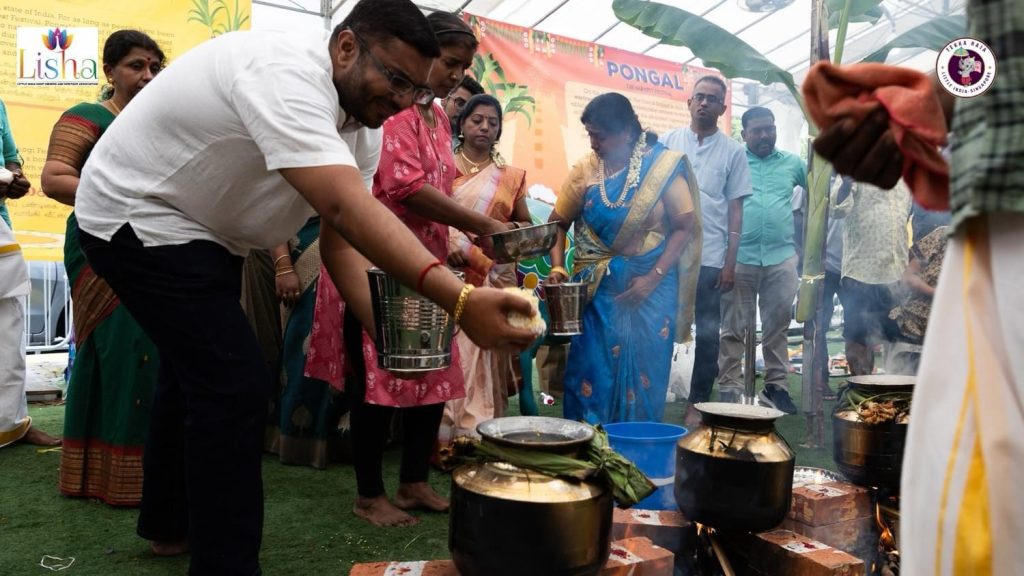 We have mass pongal with around thirty pots where those ladies join and do pongal. We encourage them to bring in more ladies and each year the numbers are increasing for mass pongal. This way we reach out the celebrations in the neighbouhood.
We have mass pongal with around thirty pots where those ladies join and do pongal. We encourage them to bring in more ladies and each year the numbers are increasing for mass pongal. This way we reach out the celebrations in the neighbouhood.
9.Who are the other factions involved in Little India pongal celebrations now and how has it been evolved?
The celebrations now are very inclusive. Through the support of various partners, media and by word of mouth, the celebration mood is kicked and taken off wide spread. We have included more workshops now. It is a celebration for senior citizens, school students, migrant workers, tourists and many others, apart from local Singaporeans. To name a few,
A)Tourists
Tourists too participate in the mass pongal. We cater events also to engage them by providing a platform for them to understand the significance of pongal.
B)Temples
The temples also approached us and wanted to be part of it. When we started the pongal light up, they came in to support. Though the lighting up cost is over $70,000 , the overall amount from the temples amount close to $20,000, each temple contributing $1,000 or $2,000.
C)General Public
Some 5,000 people come to get the pongal rice donated by the temples, on the pongal day for maattu pongal.
D)Migrant Workers
LiSHA also includes the migrant workers. As most of them come from the rural areas, they see so much of significance to pongal celebrations. Migrant workers get an opportunity to celebrate pongal when they come to Little India. It brings them back the memories of pongal celebrations in their homes
E)Non-Indians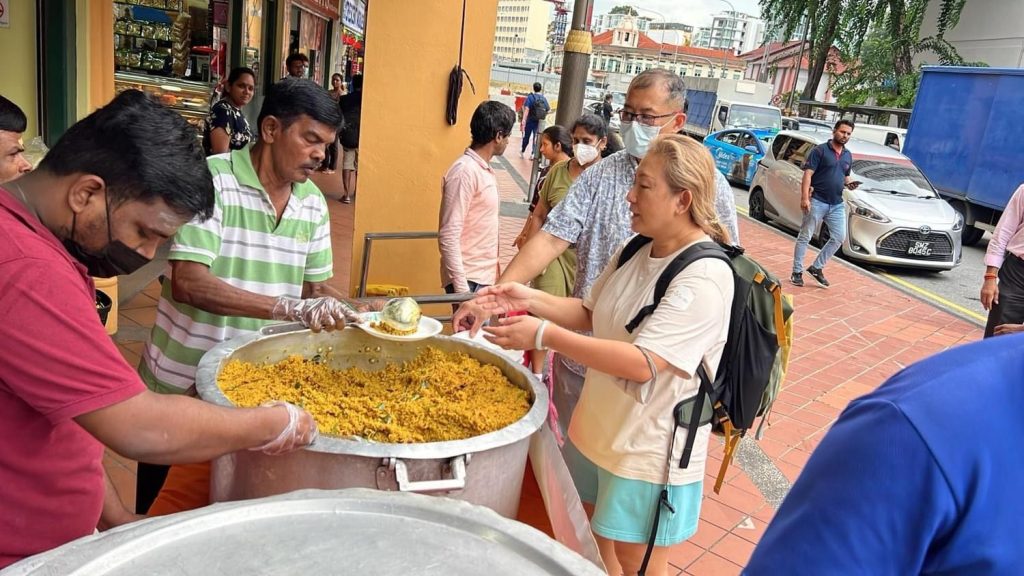 Through media, IAECs (Indian Activity Executive Committee), we promote and it reaches Non-Indians too.
Through media, IAECs (Indian Activity Executive Committee), we promote and it reaches Non-Indians too.
F)Cultural Groups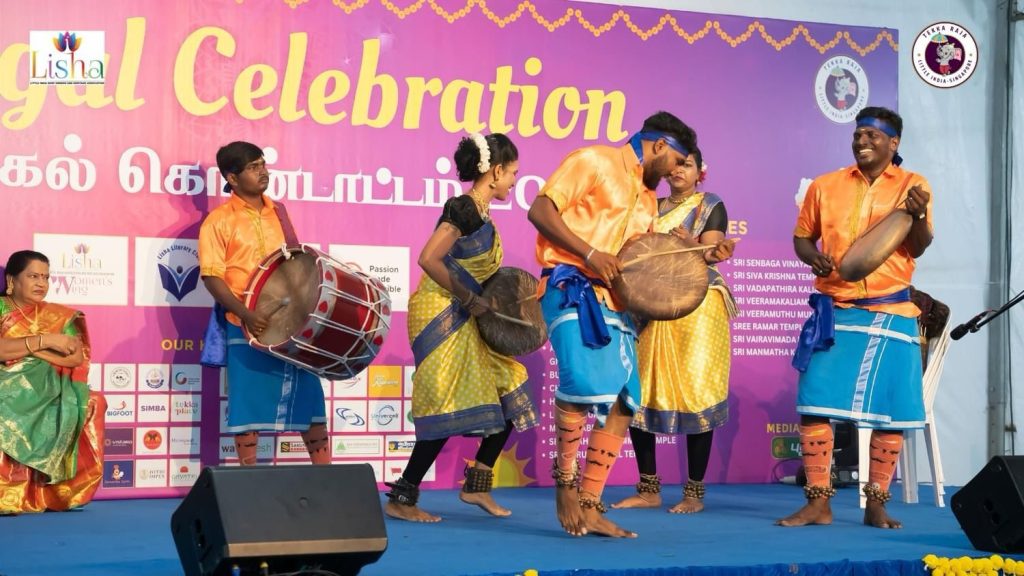 We have cultural programs and some local art schools participate and we also bring in foreign talents. We try to promote the traditional folk arts like karakam and we try to enrich folk arts too.
We have cultural programs and some local art schools participate and we also bring in foreign talents. We try to promote the traditional folk arts like karakam and we try to enrich folk arts too.
G)Senior Citizens
We have pongal sharing on the day of pongal. We get the elders, close to hundred of them from old age homes like Sree Narayana Mission, Sunlove home, Jemaiah and others to make the pongal. They are the pioneers who contributed to the building of this Nation. This is one way of thanking them for their efforts, on this special occasion. We give them sumptuous food, gifts, goodie bags in return.
So it is a big fulfilment for LiSHA in the beginning of the year to serve the society that is inclusive. It is a celebration from young to old, with all community partners.
10.Any initiatives taken to be eco-friendly?
We also try to be eco-friendly, and this year we will be championing plastic free usage by all the shops.
11.What are the future plans?
First when we started, I had a question in mind as how long will it go? Now we are in the 24th year of celebrations. Now it has become more of a National event. As a secretary and chairman of LiSHA for the past twenty four years, I was optimistic about the continuity of the celebrations of pongal. To underline it’s success, the Little India pongal festivals have been included in the MOE curriculum.
In Singapore this pongal celebrations in Little India will continue and they are very much an integral part of the community.
Photos Credit: LISHA Facebook Page
